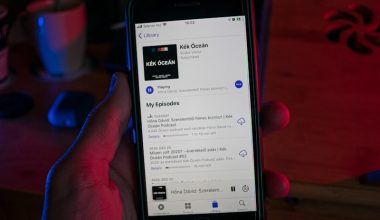Releasing your music on all streaming platforms is an essential step for every artist in today’s digital age. It’s not just about making your songs available—it’s about reaching the right audience, building your brand, and creating a long-lasting impact. If you’ve ever wondered how to navigate this process, you’re in the right place.
Why Releasing Your Music on All Platforms Matters
The days when CDs and radio airplay were the primary ways to distribute music are long gone. Today, platforms like Spotify, Apple Music, YouTube Music, and Amazon Music dominate the industry. By releasing your music on all streaming platforms, you maximize your potential to connect with listeners across the globe. And let’s not forget, more platforms mean more chances to earn revenue from your work.
Listeners today use multiple platforms to enjoy music—some might prefer Spotify, while others stick to YouTube or Deezer. By being present on all these platforms, you’re ensuring that no potential fan is left behind. So, let’s dive deeper into how you can make this happen.
Step 1: Prepare Your Music for Distribution
Before you can release your music, it’s crucial to ensure that everything is ready for the world to hear. Start with the basics:
- Finalize Your Tracks: Make sure your songs are fully mixed and mastered. High-quality audio files are a must for streaming platforms.
- Organize Metadata: Metadata includes details like song title, artist name, album name, and genre. This information helps platforms categorize and display your music correctly.
- Create Cover Art: Eye-catching album art is not just a visual asset—it’s a marketing tool. Most platforms require cover art to meet specific dimensions, so ensure your artwork is professional and complies with guidelines.
Getting these steps right sets a solid foundation for your release.
Step 2: Choose a Digital Distributor
Streaming platforms don’t allow you to upload music directly. Instead, you need a digital distributor to act as a bridge. These distributors ensure your music is properly uploaded, formatted, and distributed to multiple platforms. Some popular distributors include:
- DistroKid: Known for its ease of use and affordable yearly plans.
- TuneCore: Offers a pay-per-release model and detailed analytics.
- CD Baby: Combines music distribution with artist support services.
- Amuse: Provides free distribution with optional premium plans.
Research these options to find the distributor that aligns with your needs and budget.
Step 3: Upload Your Music and Set Release Dates
Once you’ve chosen a distributor, it’s time to upload your music. Be meticulous during this step to avoid errors. Here’s what to focus on:
- Upload High-Quality Files: Use WAV files for the best audio quality. Most distributors require files to be at least 16-bit and 44.1 kHz.
- Double-Check Metadata: Ensure that song titles, artist names, and other details are correct. Mistakes here can delay your release.
- Set a Release Date: Choosing the right release date can make a big difference. Give yourself at least four weeks to plan and promote your release.
Step 4: Promote Your Music Before Release
Releasing your music is only half the battle. To make an impact, you need a solid promotion strategy. Here’s how to get started:
- Social Media Campaigns: Use platforms like Instagram, TikTok, and Twitter to generate buzz. Share teasers, behind-the-scenes content, and countdown posts.
- Email Marketing: Build an email list of fans and keep them informed about your upcoming release. Offer exclusive previews to your subscribers.
- Collaborations: Partner with other artists or influencers to expand your reach.
- Press Outreach: Reach out to music blogs, playlists curators, and local media to cover your release.
Creating anticipation is key to ensuring that your release doesn’t go unnoticed.
Step 5: Launch Day Strategies
The day your music goes live is a big moment. Here’s how to make the most of it:
- Engage With Your Audience: Respond to comments, share fan posts, and thank listeners for their support.
- Host a Listening Party: Use platforms like YouTube or Instagram Live to host a virtual event where fans can hear your music and interact with you.
- Track Performance: Use the analytics tools provided by your distributor and streaming platforms to monitor how your music is doing.
Step 6: Keep Promoting Post-Release
Promotion doesn’t end on release day. In fact, the weeks and months after your launch are just as important. Here are some post-release tactics:
- Pitch to Playlists: Submit your tracks to Spotify’s editorial playlists and other independent curators.
- Create Music Videos: Visual content helps keep your music fresh and engaging.
- Collaborate on Remixes: Partner with other artists or producers to remix your tracks and reach new audiences.
- Engage in Social Media Challenges: Start a hashtag or challenge based on your song to encourage user-generated content.
The Importance of Consistency
Releasing your music on all streaming platforms isn’t a one-time effort. To build a loyal fanbase, you need to stay consistent. Regular releases, active engagement, and ongoing promotion will keep your audience interested and help you grow over time.
Final Thoughts
Taking the step to release your music on all streaming platforms opens doors to endless opportunities. It allows you to share your creativity with the world, build a global audience, and even generate income from your passion. With careful planning, the right tools, and a dedication to your craft, you can make your music career thrive in the digital era.
So, are you ready to release your music and take the world by storm? Start planning today, and don’t let anything hold you back!
Related Articles:
For further reading, explore these related articles:
- How to Release Your Music on All Streaming Platforms with No Upfront Fees
- Release Your Music on All Streaming Platforms with 100% Royalties
For additional resources on music marketing and distribution, visit DMT RECORDS PRIVATE LIMITED.






